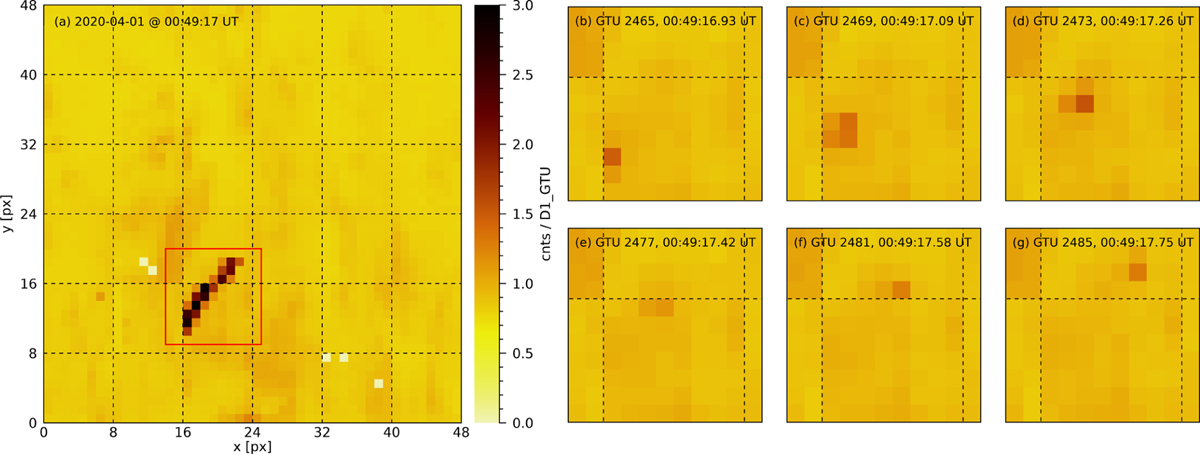Fig. 1

Download original image
Example of a meteor event detected by the Mini-EUSO telescope on board the ISS, imaged on D3 data during session no. 14 on 01/04/2020 at 00:49:17 UT over the South Atlantic Ocean (9°33′ S, 4° 19′ W) and classified as an M event in the Mini-EUSO meteor database (see Sect. 3.2). The event lasted for 32 GTU, from 00:49:16.72 to 00:49:18.03 UT (~1.3 s). At that time, the ISS was moving in orbit at an altitude of about 424 km from the ground at a speed of 7.66 km s−1, with an apparent motion projected on the ground oriented along the SSE direction, at an azimuth of ~144° counted clockwise from the North. (a) Reconstructed track of the meteor on the PDM of Mini-EUSO, obtained by a selective integration of D3 images over the pixels lightened up by the event. The apparent motion of the ISS on the PDM is approximately oriented along the positive y direction. (b–g) Zoom of the PDM in the region x ∊ [14, 24] px–y ∊ [9, 19] px (highlighted in panel a by the red box) for subsequent times every 4 GTU (~0.16 s). On all panels, dashed lines mark the border of adjacent MAPMTs corresponding to a physical separation on the PDM of ~1 px which is not sensitive to incoming light. The presence of these gaps is visible, for example, when the meteor track crosses the border between two MAPMTs around GTU 2477 (panels e–f), at which time the meteor dims because part of the light is focused on this inactive region of the PDM.
Current usage metrics show cumulative count of Article Views (full-text article views including HTML views, PDF and ePub downloads, according to the available data) and Abstracts Views on Vision4Press platform.
Data correspond to usage on the plateform after 2015. The current usage metrics is available 48-96 hours after online publication and is updated daily on week days.
Initial download of the metrics may take a while.


